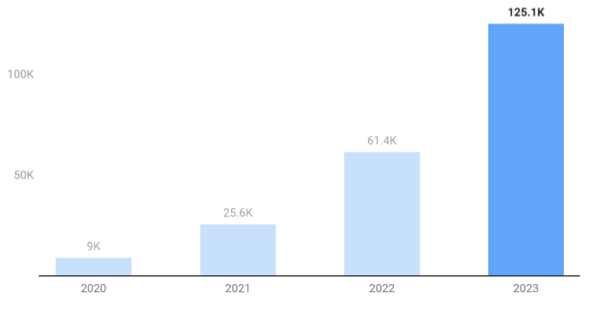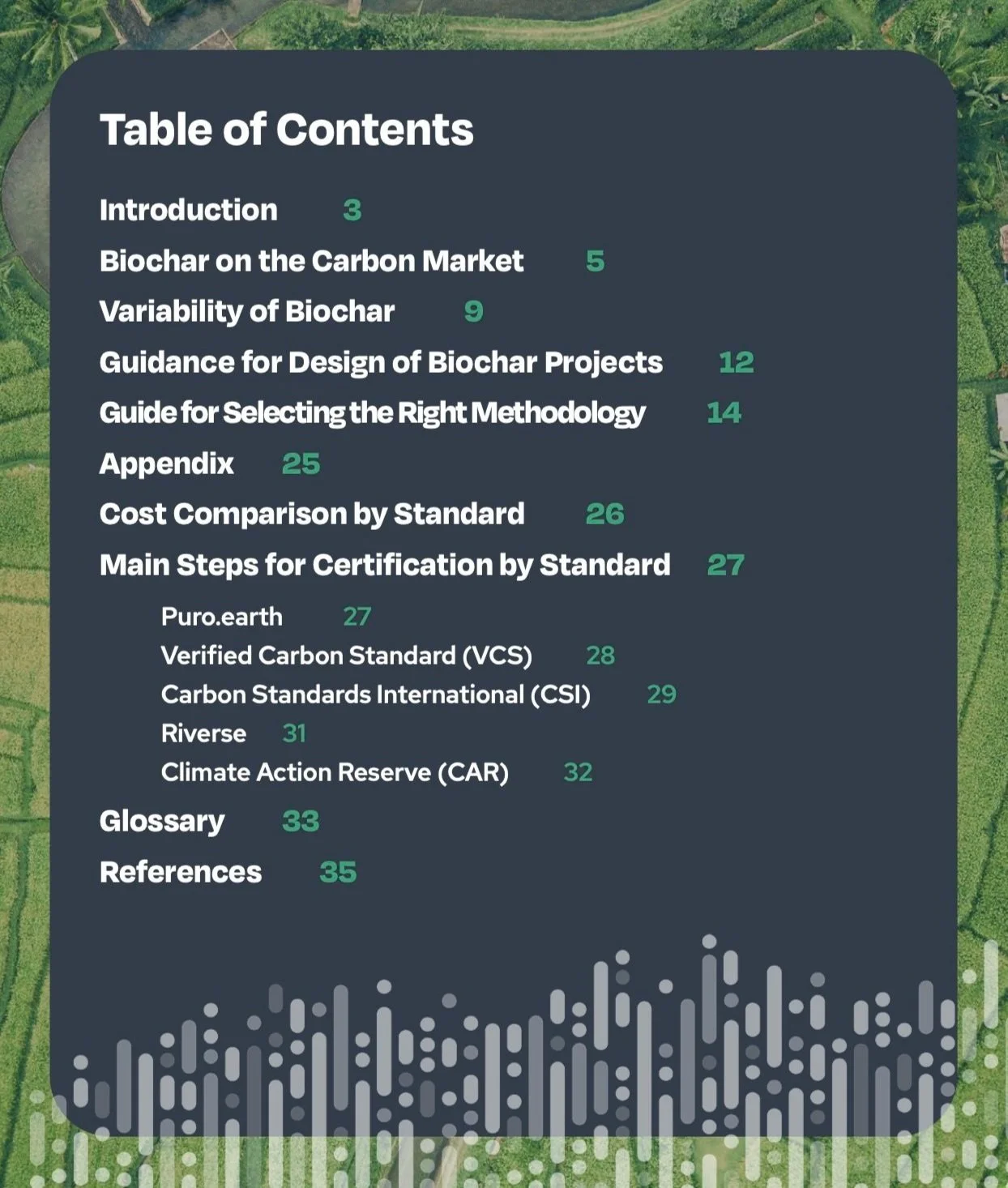Launch of the Biochar Manual for Carbon Removal
The world needs carbon removal and biochar is leading the way for the carbon removal market. Read the IBI-HAMERKOP Biochar Manual for Carbon Removal for a comprehensive introduction to biochar, carbon removal programs and how to create your own biochar carbon reduction project.
Most climate change mitigation measures consist of avoiding the emission of GHGs into the atmosphere. However, with concentrations of carbon dioxide in 2022 reaching an all-time high of 421 parts per million (PPM), it is clear that we must embrace carbon removal in addition to avoidance strategies. With 94% of 2023 carbon removal deliveries coming from the production of biochar [1], continuing to scale this growing industry is essential to removing carbon from our atmosphere.
Biochar is a black, carbon-rich solid obtained from the high temperature carbonisation of biomass in an oxygen free environment. Its high carbon content and resistance to abiotic and biotic degradation makes it a powerful carbon sequestration tool, and its other properties like high porosity and water holding capacity make it useful in numerous applications like in soil as an additive, in purification systems and even in animal feed.
Producers of biochar can get financial support for their projects by registering and certifying their projects with one of many carbon removal standards. Certification is an important step all biochar carbon removal projects go through, as it ensures quality and integrity of the carbon sequestration credits produced which is essential for buyers.
Biochar mixture ready to be applied to soil via GIZ Bush Control and Biomass Utilisation Project
Choosing the right standard and completing registration of biochar carbon removal projects can be a complex task, and the amount of technical details involved can be overwhelming. The IBI-HAMERKOP Biochar Manual for Carbon Removal provides a unified source of information and is essential reading for those interested in biochar as a carbon removal tool, with insights on:
Biochar characteristics
Guidance for the design and certification of biochar projects (technology and feedstock considerations, biochar end use, eligibility, etc.)
Differences and characteristics of methodologies and carbon certification standards (i.e. registries)
Guidance on the steps required to build your own biochar project (e.g. emission calculations, monitoring procedures and carbon project registration requirements)
The Biochar Manual for Carbon Removal was created to remove barriers to the biochar market by bringing together all the information required for project developers to set-up a carbon-financed biochar project, and for financial sponsors to understand the underlying assumptions behind carbon credits from biochar, into one easy-to-access manual.
The Biochar Explosion
Biochar has been utilised as a soil amendment for thousands of years, but recently has garnered further interest for its carbon storage capabilities. Biochar producers have received funding from multinational companies such as: Microsoft, JP Morgan Chase, Swiss Re and Nasdaq, among many others looking to invest in carbon removal projects. These organisations have been a driving force behind the acceleration of new biochar projects development around the world.
Figure 1 – Total tonnes of carbon removal delivered [2]
First-of-its-kind research recently highlighted that biochar’s potential to scale carbon removals as a win-win solution for people and the planet could potentially remove up to 6% of global annual GHG emissions [3].
While there were less than 1,000 tonnes of biochar-linked CO2e removal units (tCO2e) in 2020, this grew to 34,000 tCO2e in 2022, and to 65,000 tCO2e in 2023. This rapid growth in production is set to continue through the 2020s.
Biochar production and application is one of the most cost-effective long-term carbon storage solutions. It can be set up at different scales, take place anywhere in the world and production can be up and running within weeks or months, rather than years. Despite this sustained increase in production, increase in demand for carbon removal is growing at an even quicker pace, making biochar projects an attractive value proposition for developers looking to join the carbon market.
How to use the Biochar Manual for Carbon Removal
Biochar’s multi-faceted nature can be a blessing and a curse – information on biochar’s characteristics, its use and how to enter the carbon removal market using biochar can all be difficult to find and technically complex. The Biochar Manual removes this information barrier and provides details on standards, methodologies and production technologies.
Potential project developers and financial sponsors can learn more about biochar, how the various carbon certification standards compare in their requirements to issue carbon removal units, and the processes of each certification standards to issue credits for biochar. The guide should be used as a stepping stone into the world of carbon finance for biochar developers and sponsors to make fully informed decisions about the future of their activities.
Once a biochar production activity has been designed (e.g., technology, quantity and type of feedstock, location, application, etc.), the Biochar Manual for Carbon Removal can be used to pre-select the most adapted carbon certification standard by using the comparison matrix. Once a few potential standards and methodologies have been selected, it is necessary to meticulously assess their rules and requirements, together with potential changes since the release of the manual. It can also be valuable to engage with a technical consultant such as HAMERKOP, or with the standards themselves to obtain answers to project-specific questions.
What Does a Successful Biochar Project Look Like?
The success of biochar projects come from their versatility. By using a feedstock that would otherwise go to waste, and utilising the biochar on soil, biochar projects act as waste management, fertiliser reduction, and energy generation projects at the same time.
Successful biochar projects tailor their activities and features to the individual and local circumstances. For example, using a high-calorie feedstock that produces lots of thermal energy is great for projects that can utilise that energy, e.g. for drying coffee beans or for heating water, but is a wasted opportunity for projects who will not utilise the heat produced.
Equally, biochar projects are a valuable carbon removal tool when the biochar can be used locally, but if the biochar or feedstock must be transported long distances then project’s positive environmental impact is reduced.
The Biochar Manual for Carbon Removal helps developers, sponsors and interested stakeholders understand the main features of best-in-class projects, by providing answers to questions such as:
What feedstock is eligible for each carbon certification standard or registry?
Do I need certification for my biochar?
What technologies can I use to produce biochar?
What standards does the biochar I produce need to reach?
To answer these questions and many more, download the Biochar Manual for Carbon Removal by clicking the button below, and begin growing your biochar project today!




